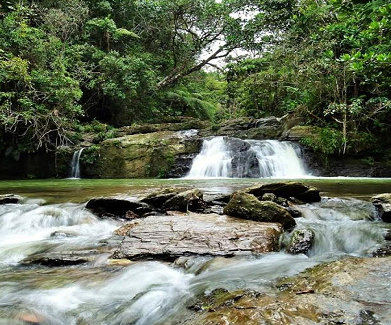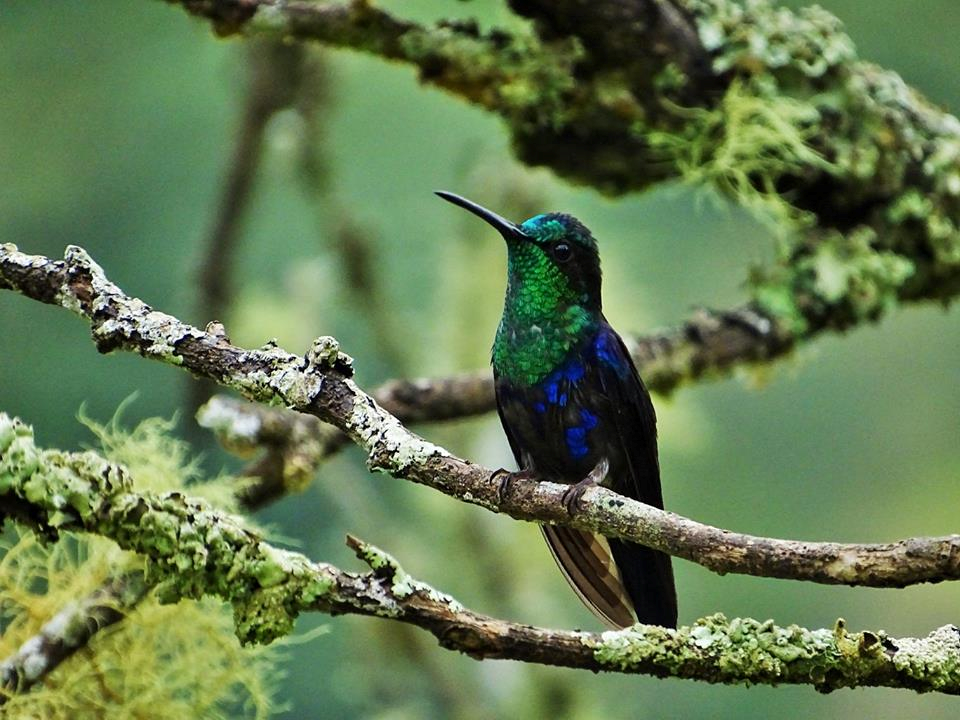- Cacica Noría Regional Protected Area safeguards one of the most biodiverse places on the planet.
- The reserve will be managed by CorAntioquia, the Anorí Environmental Working Group and Proaves.
- Despite protection, the new park remains threatened by climate change.
The cloud forest ecoregion of the Colombian Andes is arguably the most biodiverse in the world. A moist climate, varying altitudes, and high rates of endemism create idyllic conditions for life. However, cloud forests are also under siege from numerous human-related threats such as climate change, mining, commercial logging, and subsistence hunting.
Though there is no foreseeable end to the epic battle between forest loss and forest conservation in South America, conservationists won a small victory in December 2016 with the creation of the 13,000 acre (5,261 hectare) Cacica Noría Regional Protected Area in Colombia.
The Regional Environmental Agency, CorAntioquia, as well as the Anorí Environmental Working Group will manage the reserve.

“[Cacica Noría Regional Protected Area] is a nature reserve that will place Colombia before the eyes of the world,” said Adolfo Correa with CorAntioquia. “The intention is to widen the area from there to better create local and regional benefits, including improving water supply, climate regulation, wildlife shelter for pest-controlling species, and nesting and reproduction sites for emblematic national species. It will also be a place for visitors who are interested in conservation.”
The establishment of the reserve was made possible in part by Nature and Culture International, which funded the scientific research and community outreach.
Cacica Noría will protect plant species ravaged by commercial logging such as the black oak (Trigonobalanus excelsa) and the comino tree (Aniba perutilis), both endemic to Colombia.
Other important species include jaguars (Panthera onca centralis) and pumas (Puma concolor), which often fall victim to retaliatory killings by local farmers. These large cats have a low population density, a far-reaching habitat range, and a low rate of reproduction, three factors which make them vulnerable to extinction on the regional and national level. According to Correa, the protected area will only act as “route of passage” within their larger habitat range, but these two feline species will still benefit from Cacica Noría; it will be a safe place for them to breed, rear their young, and temporarily escape the surrounding landscape.

Other threatened mammals found in the reserve are the brown spider monkey (Ateles hybridus hybridus), the silvery-brown tamarin (Saguinus leucopus), and the spectacled bear (Tremarctus ornatus), all of which have faced increasing rates of habitat loss and degradation. Mammals like deer and turkeys, which are under pressure from subsistence hunting, are also found in the Cacica Noría Regional Protected Area.
This reserve harbors around 400 bird species, 20 of them threatened. The chestnut-capped piha (Lipaugus weberi), a species endemic to Colombia, is now considered Critically Endangered. Proaves, a Colombian non-profit, will manage a 3,270 acre (1,323 hectare) section of the reserve specifically for the preservation of this beloved bird species and others like the black tinamou (Tinamus osgoodi).
Conservationists believe that protecting this vital watershed will also improve national water quality.
“This area protects the head waters of the Anorí, Porce, and Nechí rivers, used by local people for drinking water, agriculture, and cattle raising,” said Felipe Serrano with Nature and Culture International. “This area also contributes water to the Porce hydroelectric project, one of the most important in Colombia.”
Conservation of riparian forests, as well as aquatic and amphibian species such as the billed toad (Rhinella macrorhina) and the Murri robber frog (Pristimantis bellona), will also be important to maintaining freshwater ecosystems.

Around 90 percent of the reserve will be under strict protection, leaving 10 percent for sustainable agriculture and forest restoration projects.
Despite this step forward, climate change remains a threat to cloud forests that cannot be controlled by the borders of a protected area. As temperatures warm up, many cloud forest species will be forced to migrate upslope to maintain a favorable climate. However, the pace of migration often cannot keep up with the rapid environmental changes we are seeing today. As our planet’s climate systems continue to be altered, it is very likely that some or many of the species found in cloud forests will be lost. While establishing protected areas is certainly important and beneficial, truly conserving cloud forest ecosystems may also require global efforts to curb climate change.
Historically, the land in the protected area was under pressure from mining, hunting, logging, and other unsustainable uses. In order to make the transition to a reserve, Correa maintains that local communities must be able to have a say in management decisions and be provided with sustainable economic alternatives such as ecotourism. Receiving benefits from the reserve and having a sense of responsibility towards its protection will be key to the success of Cacica Noría – and the many species which are considered endangered, endemic, or emblematic to the people of Colombia.
Citations:
Hance, J. (2013, September 18). Climate change could kill off Andean cloud forests, home to thousands of species found nowhere else. Mongabay.com. Retrieved February 27, 2017, from https://news.mongabay.com/2013/09/climate-change-could-kill-off-andean-cloud-forests-home-to-thousands-of-species-found-nowhere-else/
Nature and Culture International. (2016, December 19). Colombia Creates a New Protected Area! [Press release]. Retrieved from https://natureandculture.org/colombia-creates-a-new-protected-area/